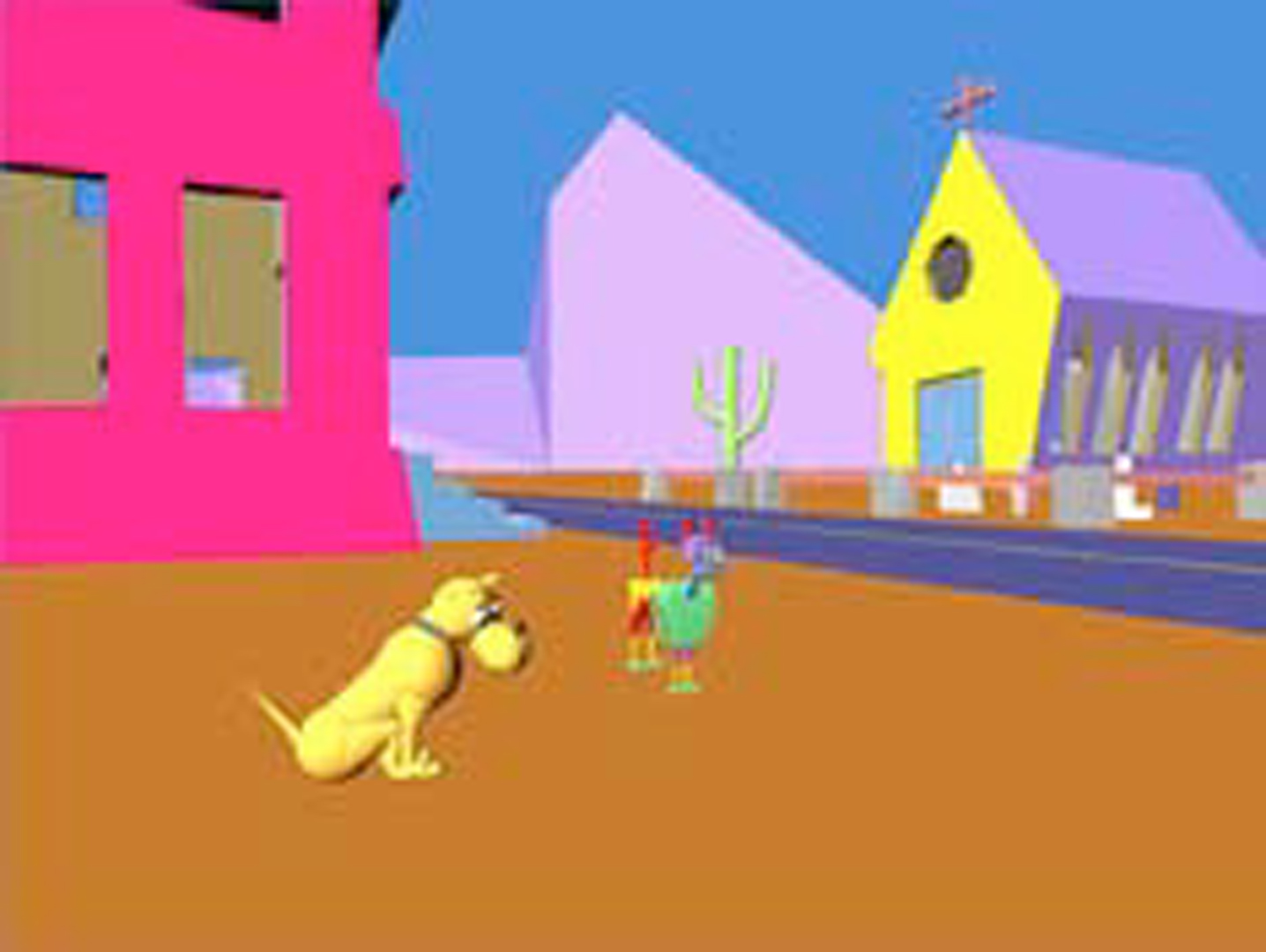“Multi-level direction of autonomous creatures for real-time virtual environments” by Blumberg and Galyean
Conference:
Type:
Title:
- Multi-level direction of autonomous creatures for real-time virtual environments
Presenter(s)/Author(s):
Abstract:
There have been several recent efforts to build behavior-based autonomous creatures. While competent autonomous action is highly desirable, there is an important need to integrate autonomy with “directability”. In this paper we discuss the problem of building autonomous animated creatures for interactive virtual environments which are also capable of being directed at multiple levels. We present an approach to control which allows an external entity to “direct” an autonomous creature at the motivational level, the task level, and the direct motor level. We also detail a layered architecture and a general behavioral model for perception and action-selection which incorporates explicit support for multi-level direction. These ideas have been implemented and used to develop several autonomous animated creatures.
References:
1. Arkin, R.C., Integrating Behavioral, Perceptual, and World Knowledge in Reactive Navigation, in Designing Autonomous Agents, R Maes, Editor. 1990, MIT Press, Cambridge, pp.105-122.
2. Badler, N.I., C. Phillips, and B.L. Webber, Simulating Humans: Computer Graphics, Animation, and Control. 1993, Oxford University Press, New York.
3. Blumberg, B. Action-Selection in Hamsterdam: Lessons from Ethology. in Third International Conference on the Simulation of Adaptive Behavior. Brighton, England,1994, MIT Press. pp.108- 117.
4. Brooks, R., A Robust Layered Control System for a Mobile Robot. 1986. IEEE Journal of Robotics and Automation RA-2.pp. 14-23.
5. Bruderlin, Armin and Thomas W. Calvert. Dynamic Animation of Human Walking. Proceedings of SIGGRAPH 89 (Boston, MA, July 31-August 4, 1989). In Computer Graphics 23, 3 (July 1989),233-242.
6. Galyean, T. A. Narrative Guidance of Interactivity, Ph.D. Dissertation, Massachusetts Institute of Technology, 1995.
7. Girard, Michael and A. A. Maciejewski. Computational Modeling for the Computer Animation of Legged Figures. Proceedings of SIGGRAPH 85 (San Francisco, CA, July 22-26, 1985). In Computer Graphics 19, 263-270.
8. Horswill, I. A Simple, Cheap, and Robust Visual Navigation System. in Second International Conference on the Simulation of Adaptive Behavior. Honolulu, HI, 1993. MIT Press, pp.129-137.
9. Koga, Yoshihito, Koichi Kondo, James Kuffner, and Jean- Claude Latombe. Planning Motion with Intentions. Proceedings of SIGGRAPH 94 (Orlando, FL, July 24-29, 1994). In Computer Graphics Proceedings, Annual Conference Series, 1994, ACM, SIGGRAPH, pp. 395-408.
10. Latombe, J. C., Robot Motion Planning. 1991, Kluwer Academic Publishers, Boston.
11. Ludlow, A., The Evolution and Simulation of a Decision Maker, in Analysis of Motivational Processes, F.T.&.T. Halliday, Editor. 1980, Academic Press, London.
12. Maes, R, Situated Agents Can Have Goals. Journal for Robotics and Autonomous Systems 6(1&2), 1990, pp. 49-70.
13. Maes, R, T. Darrell, and B. Blumberg. The ALIVE System: Full-body Interaction with Autonomous Agents. in Proceedings of Computer Animation’95 Conference, Switzerland, April 1995, IEEE Press, pp. 11-18.
14. McKenna, Michael and David Zeltzer. Dynamic Simulation of Autonomous Legged Locomotion. Proceedings of SIGGRAPH 90 (Dallas, TX, August 6-10, 1990). In Computer Graphics 24, 4 (August 1990), pp.29-38.
15. Minsky, M., The Society of Mind. 1988, Simon & Schuster, New York.
16. Raibert, Marc H. and Jessica K. Hodgins. Animation of Dynamic Legged Locomotion. Proceedings of SIGGRAPH 91 (Las Vegas, NV, July 28-August 2, 1991). In Computer Graphics 25, 4 (July 1991), 349-358
17. Renault, O., N. Magnenat-Thalmann, D. Thalmann. A visionbased approach to behavioral animation. The Journal of Visualization and Computer Animation 1(1),1990, pp.18-21.
18. Reynolds, Craig W. Flocks, Herds, and Schools: A Distributed Behavioral Model. Proceedings of SIGGRAPH 87 (Anaheim, CA, July 27-31, 1987). In Computer Graphics 21, 4 (July 19987), 25-34.
19. Tinbergen, N., The Study of Instinct. 1950, Clarendon press, Oxford.
20. Tu, Xiaoyuan and Demetri Terzopoulos. Artificial Fishes: Physics, Locomotion, Perception, Behavior. Proceedings of SIG- GRAPH 94 (Orlando, FL, July 24-29, 1994). In Computer Graphics Proceedings, Annual Conference Series, 1994, ACM, SIGGRAPH, pp. 43-50.
21. Tyrrell, T. The Use of Hierarchies for Action Selection, in Second International Conference on the Simulation of Adaptive Behavior. 1993. MIT Press, pp.138-147.
22. Wilhelms J., R. Skinner. A ‘Notion’ for Interactive Behavioral Animation Control. IEEE Computer Graphics and Applications 10(3) May 1990, pp. 14-22.
23. David Zeltzer, Task Level Graphical Simulation: Abstraction, Representation and Control, in Making Them Move. Ed. Badler, N., Barsky, B., and Zeltzer D. 1991, Morgan Kaufmann Publishers, Inc.




